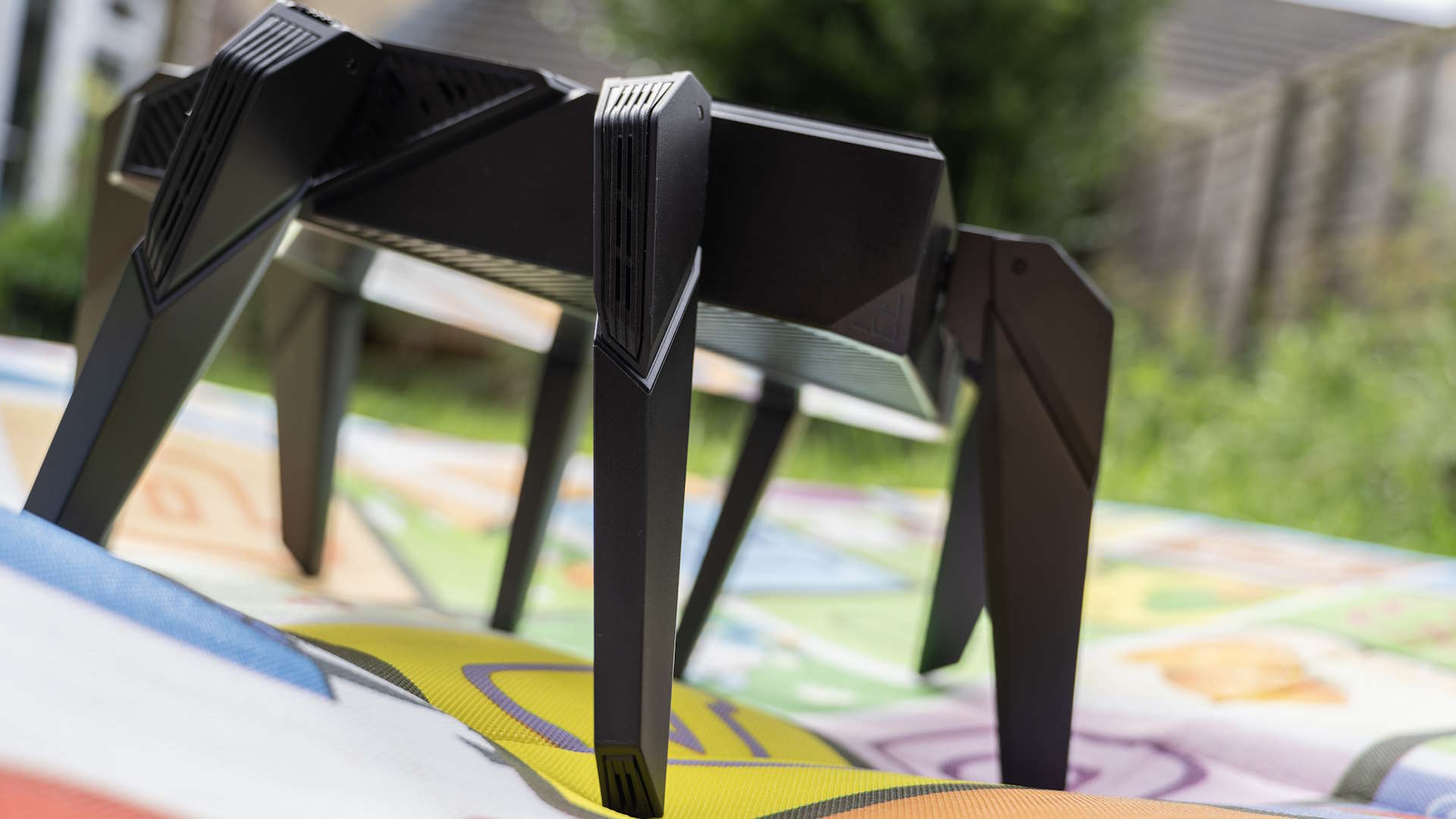
Somebody killed a headcrab, flipped it upside down, hollowed it out, and replaced all that beaky nastiness with something 100 times worse: a Wi-Fi 6E router. The eight external antennas the Asus ROG Rapture GT-AXE16000 uses to saturate your house with internets really do look like the legs of an inverted biomechanical arachnid. It makes me wish I hadn't been blessed with the perfect face for radio, just so I could do an unboxing video of it.
Anyway. If you're really into routers (what's wrong with you?) then you may have already read the review of the TP-Link Archer AX6000 on this site, in which I mention that particular piece of internet infrastructure being quite large. It isn't. THIS is large. And at $600/£570, you'd expect it to be good too.
Asus' ridiculous ROG Rapture GT-AXE16000 router deserves to be kept somewhere you can see it, so you can bring tour parties through to ooh and aah at its sculptural form, though we pity whoever has to do the dusting. The antennae won't unscrew, but can be moved around in the hunt for a better signal. This isn't really necessary, but then the PC Gamer test house is modern and quite small, with thin walls, and it flooded the place with its waves.
There's a big shiny panel on top, so you can see up your own nose when you reach around the back to unplug a cable, along with some vents. It's translucent and lights up when the router is active, producing quite an aggressive pattern of logo-rich illumination, but happily it can be shut off. Then there are those legs: the mechanical spider at the end of Wild Wild West comes to mind, or possibly a Mass Effect Reaper, or something from one of Warhammer 40K's more industrial Necron dynasties. The temptation to install it upside down, put a pair of googly eyes on it, and give it a name is immense.
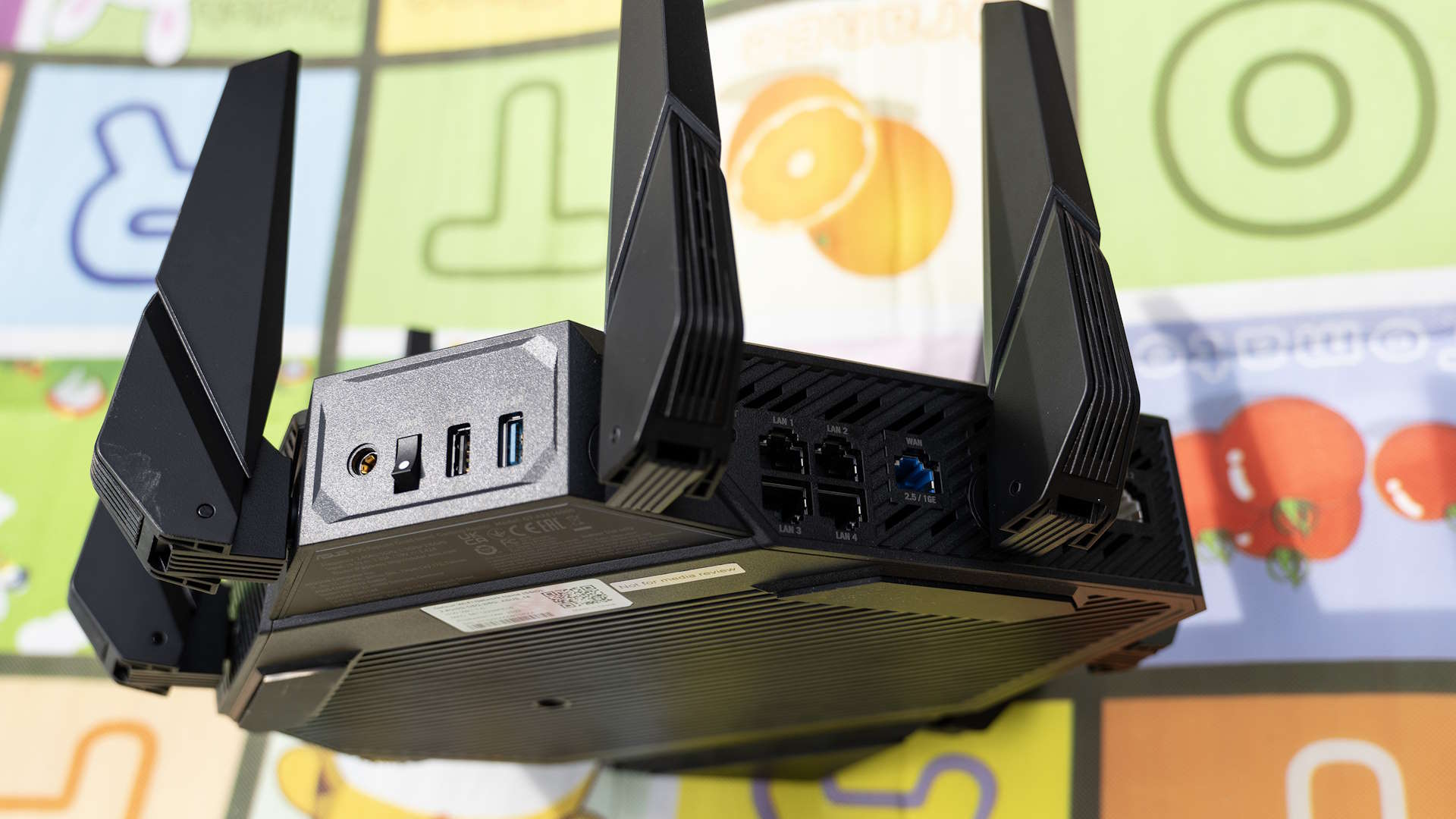
Wireless standard: Wi-Fi 6E
Max speeds: 1,148 Mbps (2.4GHz), 4,804 Mbps (5GHz x2), 4,804 Mbps (6GHz)
MU-MIMO: yes
Ethernet ports: six
WAN: 2.5Gbps
CPU: 2GHz quad-core
USB: 1x USB 2.0 Type-A, 1x USB 3.2 Gen 1 Type-C
Dimensions: 19.3 x 35.3 x 35.3cm
Weight: 2.4kg
Price: $600 | £570
They go all the way round (and there are four more hidden inside) meaning the cables the thing needs to make it work have to snake in-between them. Luckily it's an uneven shape, and there's one cut-off corner for the power and USB connections to lurk for extra accessibility, while the Ethernet cables are split into two sections—the four gigabit ports, plus the WAN, are to the left of a leg, while the two 10GB ports are on the right.
Yeah, 10-gig ports. This router isn't taking any prisoners as a network hub. Your connection to the outside world comes via a 2.5Gb socket, so you can suck all the data out of a fast fibre connection without any of it getting lost (at the time of writing the fastest connection available in the PC Gamer test suburb is 1.3Gbps). The 10-giggers can be used for a backbone cable if you've got two points on your network that exchange a lot of data, or for attaching fast network storage, but they're probably overkill for today's home networks, especially as our broadband connections don't yet approach that level. You can aggregate two of the gigabit ports, too.
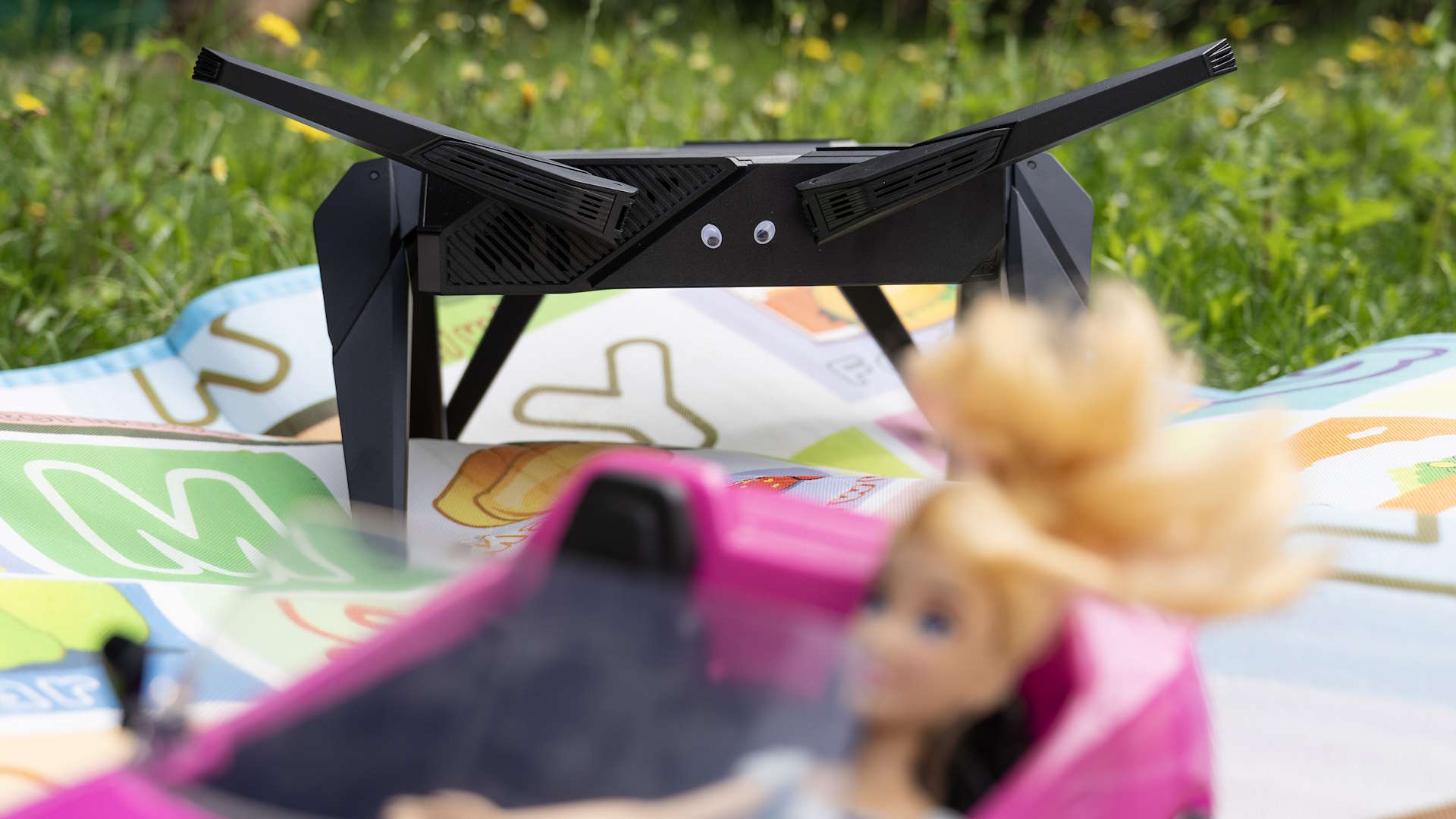
Wi-Fi performance is exceptional, with four bands at your disposal—2.4GHz, two lots of 5GHz, and the 6GHz for special 6E devices. Add all the speeds together and you get something not unadjacent to 16,000Mbps, hence the presence of that figure in the model number. It's a lot, and you'll need a great many devices all connected and working at once to take advantage of it all. It also fits in with Asus' AIMesh system of extenders, for those times you're gaming on a country estate.
Indeed, having that much available wireless bandwidth is going to out-do all but the fanciest home internet connections, which raises the question of who this router is for. Show-offs, certainly. 10-gig cable enthusiasts who like pinging 8K video files about, perhaps. Gamers? Well, maybe.
Having bigger numbers has never done anybody any harm, except in the wallet area, and if high frame rates in the latest online shooter are important to you, you'll get the same result from something cheaper.
On a 600Mbps fibre connection and a 5GHz Wi-Fi hookup there was no slowdown until we'd moved far enough away from the router to push it down toward the 500 mark, but even then we were halfway down the garden. It's not this router that's going to bottleneck your system, but more likely the Wi-Fi chip in an older device or an attempt to use it from a long way down the street.
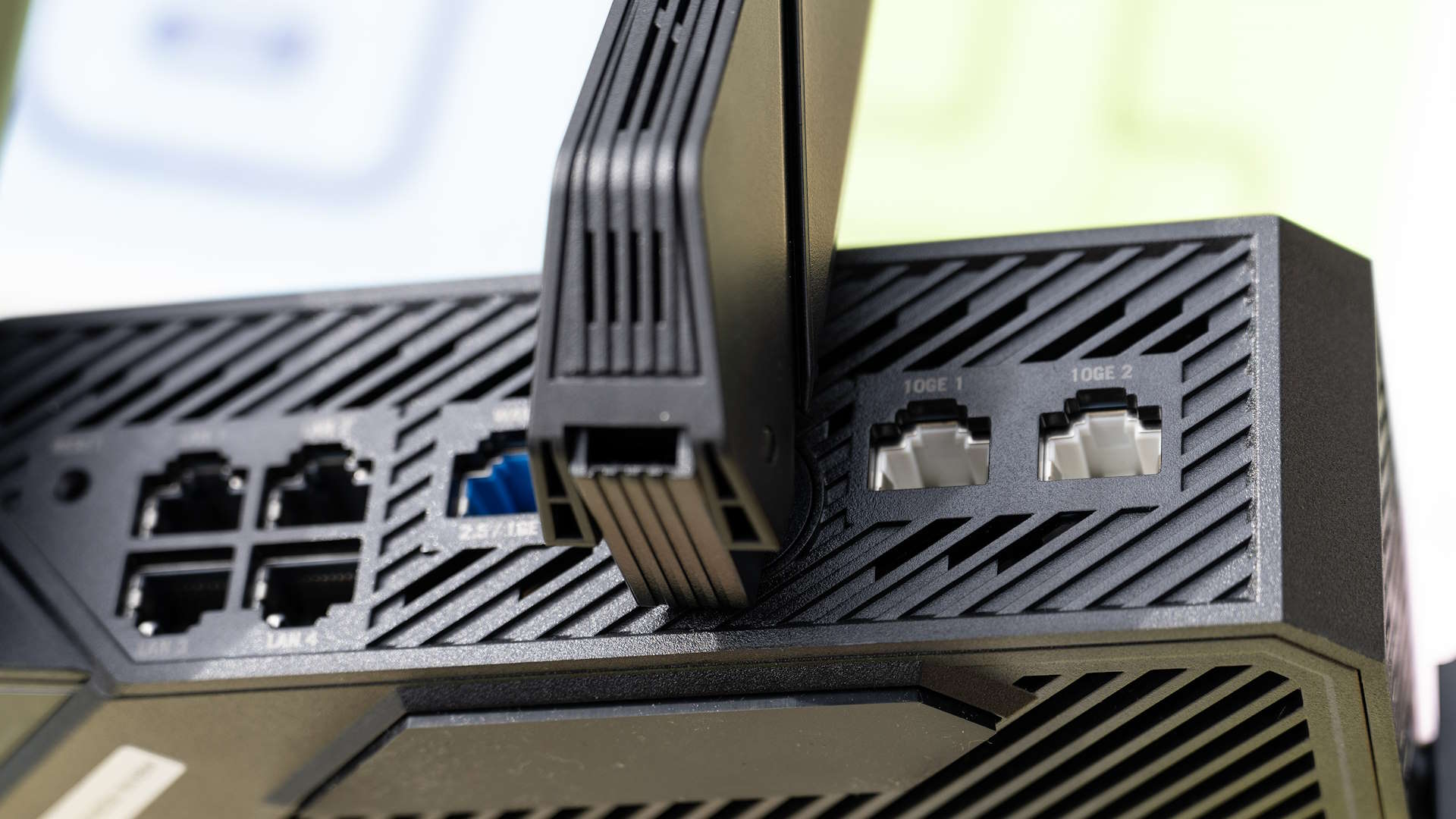
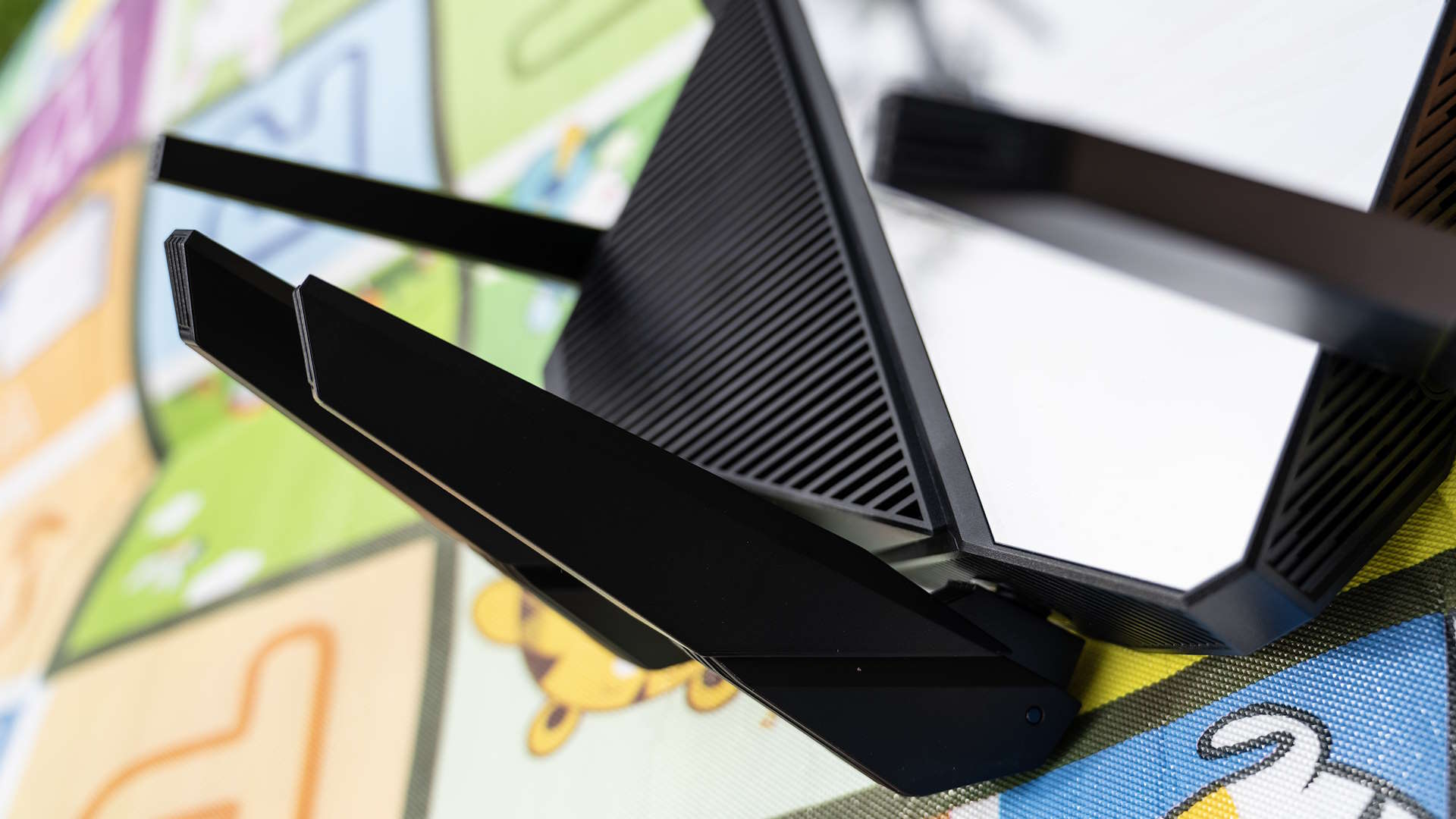

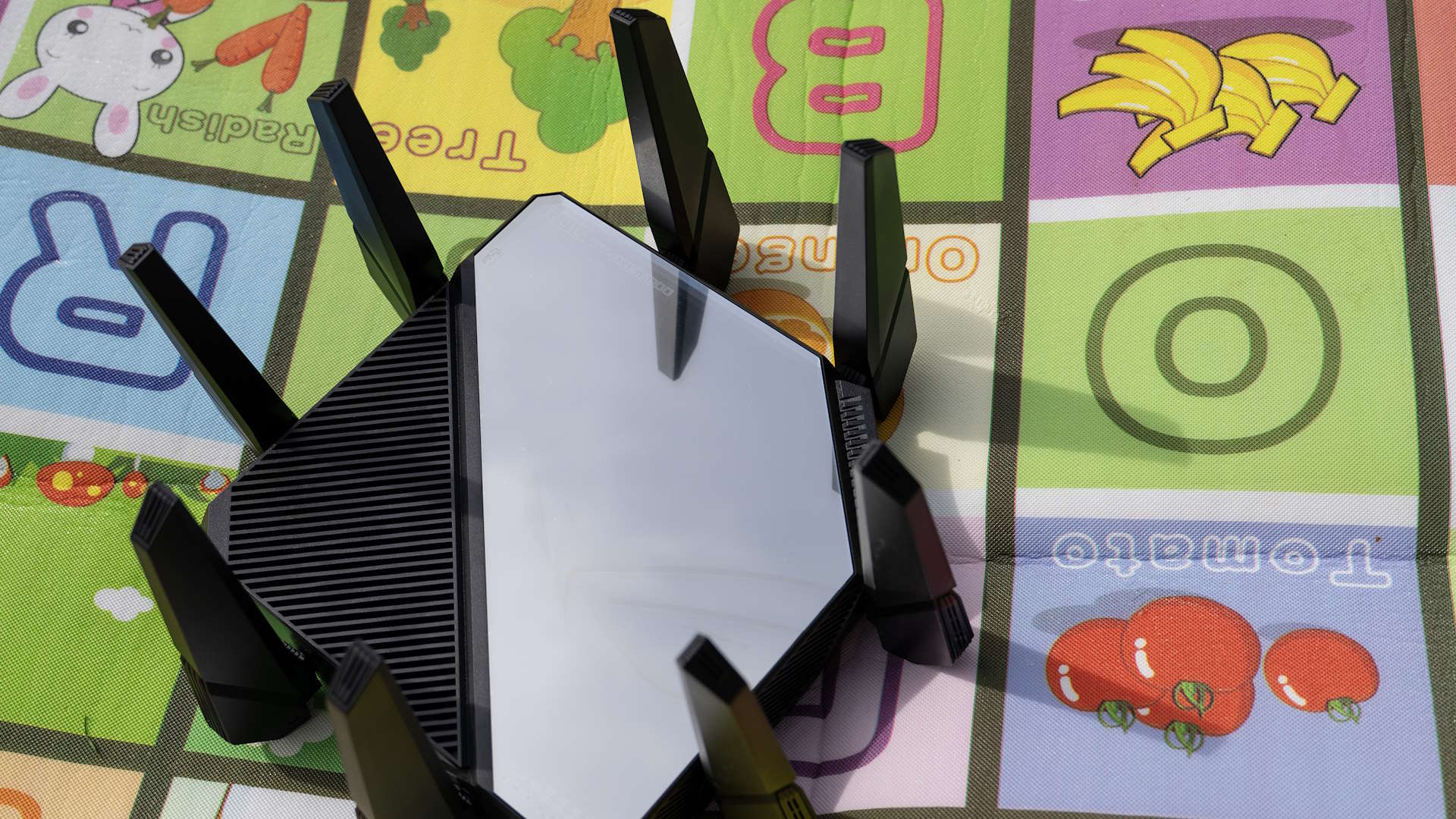
Router setup in general has improved markedly in the past few years, with a degree of standardisation even creeping in, and the ROG Rapture really does make it easy. Under the router's immense body (we do not mean to fat shame, but it really is very impressively large) you'll find a QR code, a scan of which with the Asus app prompts you to set a network name and password. Then you're good to go, entering your broadband account details is the last bit of the puzzle, before all the fiddling begins.
✅ You like them big: This is the very fastest, largest, most terrifying router you can get right now, and the perfect fit if your bulging wallet means you can't get out of your gold-plated gaming chair.
❌ You're not in desperate need for the outright fastest connection: If your modest networking needs don't include running a 10Gbps network or 6GHz Wi-Fi, then you really don't need to go all out on the admittedly extra Asus.
There's some good software on board the ROG Rapture, including robust parental controls and the popular Trend Micro anti-malware and QoS package, plus a firewall, guest network, the ability to connect drives and printers for sharing, and Samba, media server and Time Machine compatibility too. It all runs on a 2GHz quad-core CPU with 2GB of DDR4 and 256GB of storage, making it almost a PC in its own right.
Honestly, though, you don't need this router. But you might want it. This incarnation of the ROG Rapture is large and expensive, but there's no denying it's fast and capable.
It's hard to think of situations in which it might be the best choice—perhaps a shared house with three gaming laptops fighting it out with a plethora of tablets all streaming 4K movies from a fast fibre connection, or the home of a server fanatic determined to pipe data around as fast as possible. If you do end up with one, you'll be able to feel smug about your ability to make the most of a fibre-optic internet connection, and that feeling might be worth the expense.







